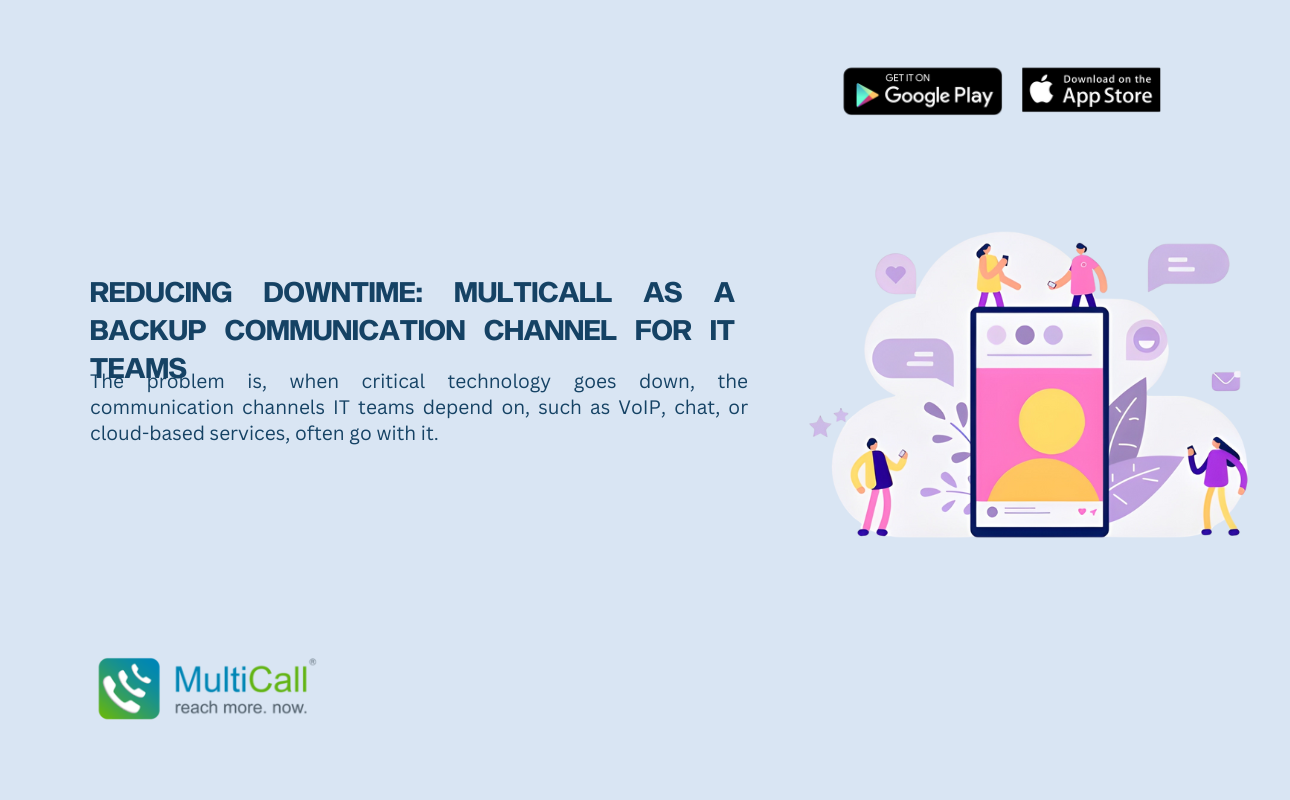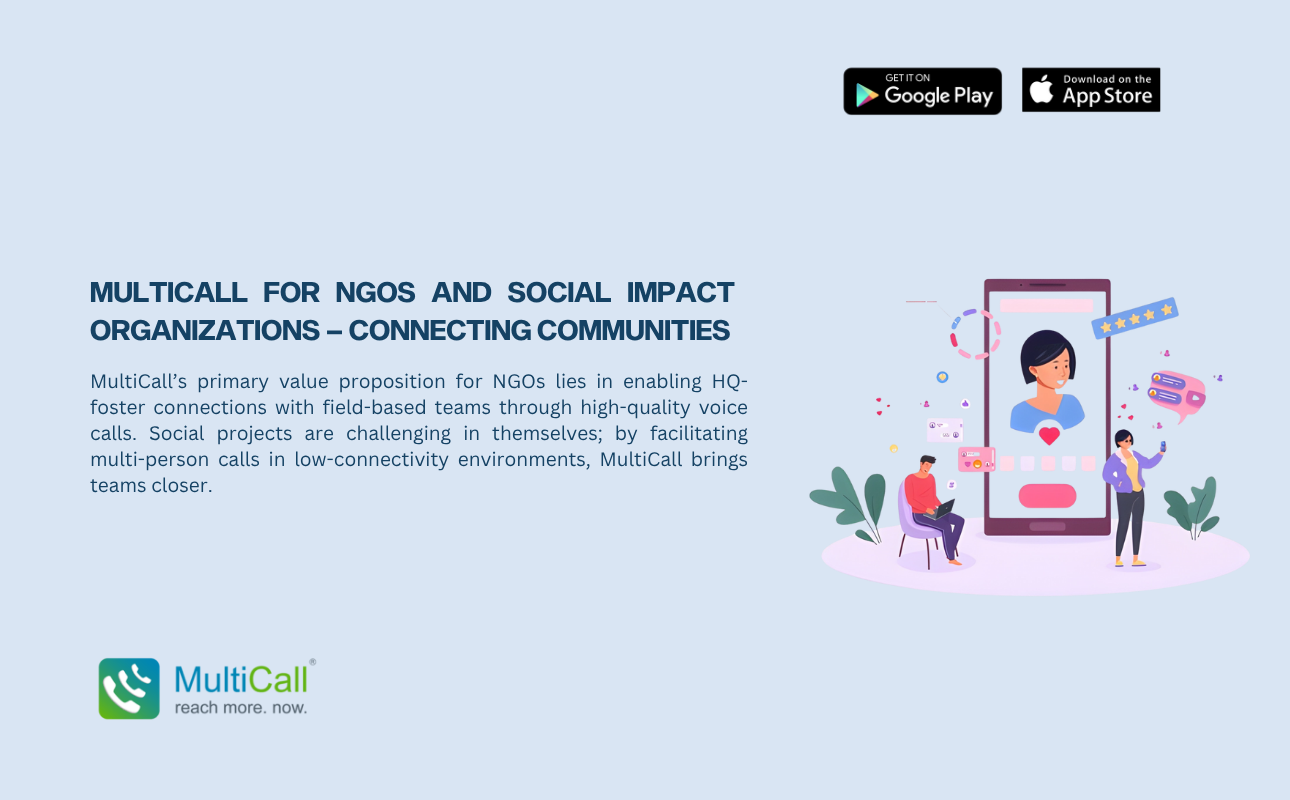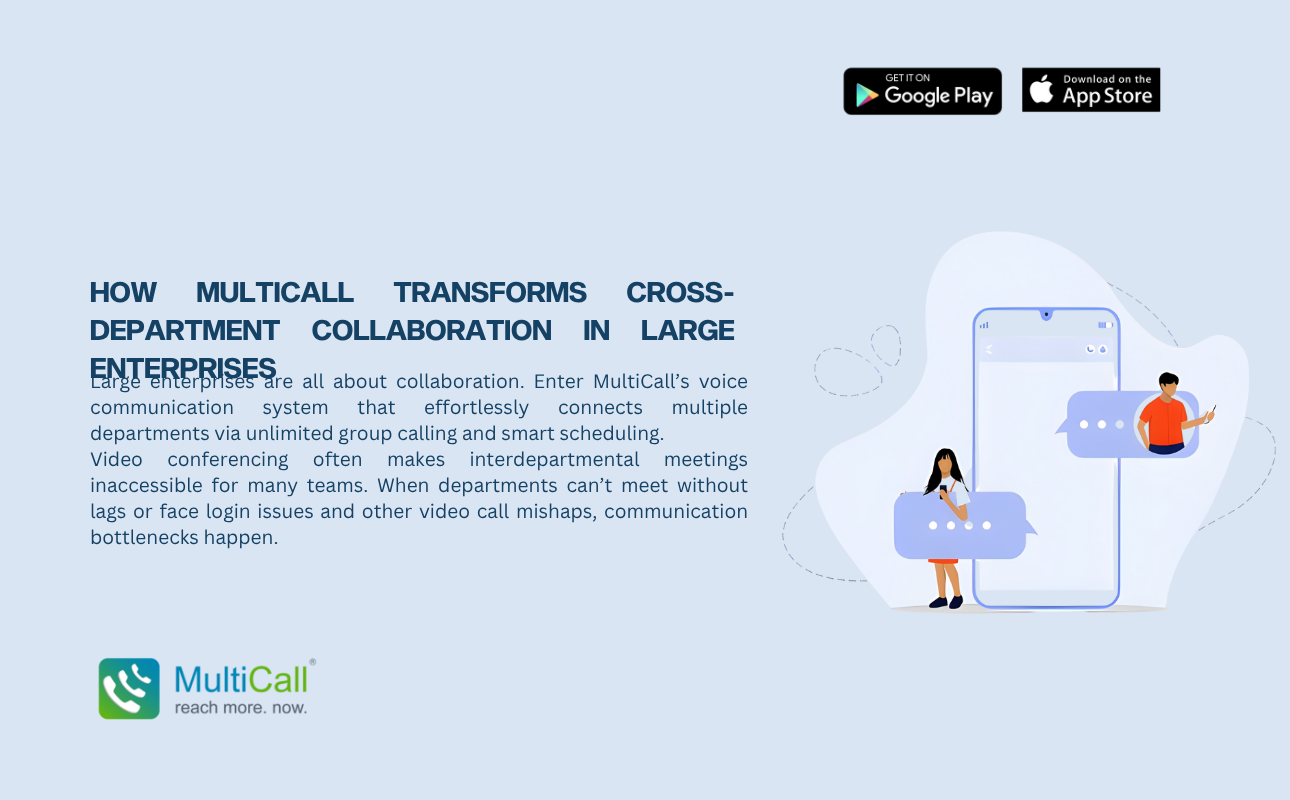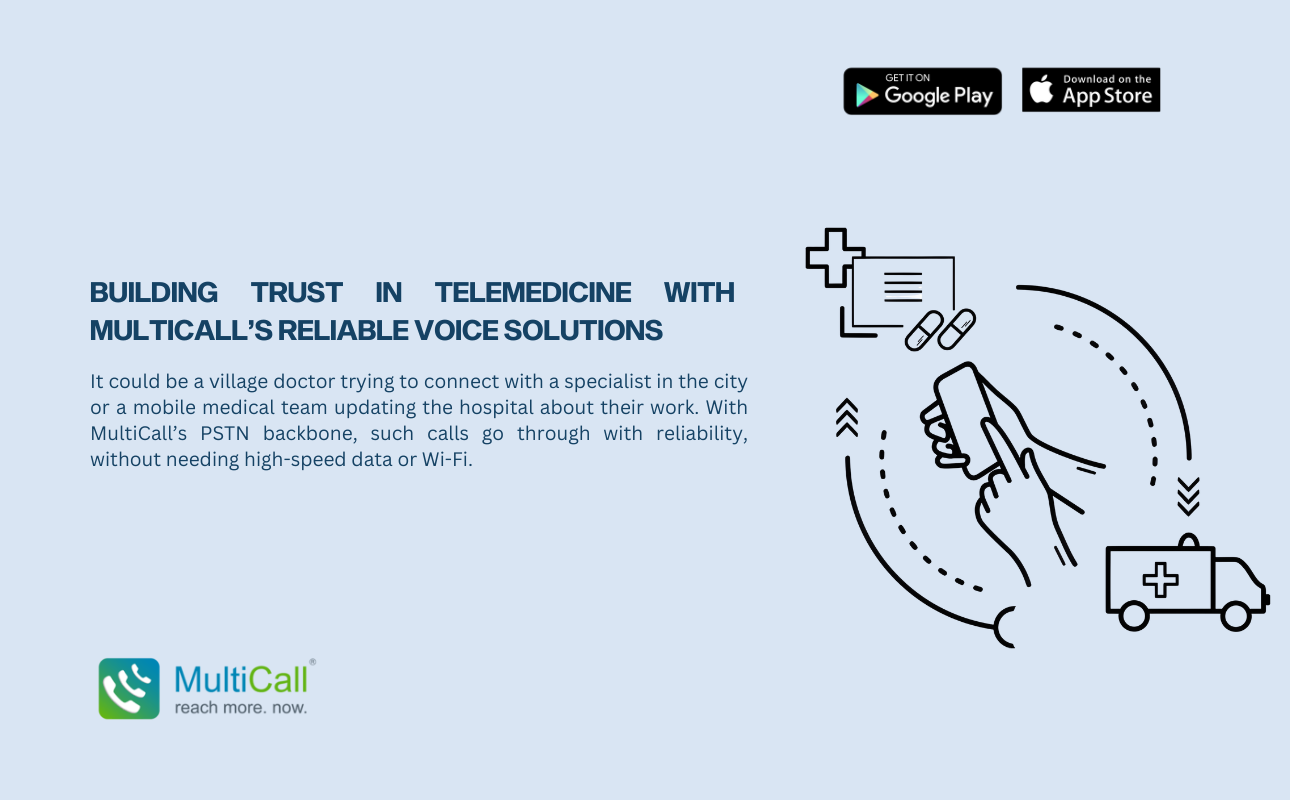
REDUCING DOWNTIME: MULTICALL AS A BACKUP COMMUNICATION CHANNEL FOR IT TEAMS
The problem is, when critical technology goes down, the communication channels IT teams depend on, such as VoIP, chat, or cloud-based services, often go with it.

Unable to see ahead, and seemingly no end in sight. It covers up a dangerous obstacle with its own lack of clarity. One would think what is being described is a fog. But the current lockdown situation due to the pandemic applies just as well. In fact, the struggle to juggle professional and personal lives within the same roof has certainly become apparent to everyone. In the process, the resulting 24/7 work culture is not working well for anyone; and it creates its own issues. Like other issues, however, these can be tackled with the right measures and approaches to counter them. On that note, 5 commonplace issues due to Working From Home, and how to individually deal with them.
With the 24/7 work culture comes a practically 24/7 level of remote communication. And on account of multiple aspects, this has proven to be an issue under remote working.
“I’m signing off..”
Prior to the lockdown, this would have been relatively to say and execute; all one had to do was make sure their deliverables were complete, and then had to log off, pack up and leave from the office. But what happens when the office also is brought under our roofs? Undefined protocols for after-hours communications have been one of the major contributors to the 24/7 working culture. And given the inability to interact face-to-face, the increased frequency of communication potentially creates a level of perceived micromanagement.
“Sorry, what was that? You’re breaking…”
Have there been meetings where you might have felt someone was taking the cover of poor communication signal to not pay attention, even though the problem actually might have been genuine? Perhaps the worst part of said culture would be the rise of uncertainty of members’ active participation to the job at hand.
The solution to this particular problem warrants an approach with multiple measures involved. First, managers would do well to differentiate brief communications and clear communications, not combine them. What are we talking about?


Have you at times felt guilty that you may not be doing enough? It turns out that not only are you not alone in this, but this tendency also has a name. Known as impostor syndrome, this basically is a feeling of inadequacy that most high achievers tend to experience, usually after a noteworthy achievement.
From said feeling of inadequacy come the aspects of increased stress, work tension, and lack of sleep. All these ultimately culminate in a loss of productivity. Lesser productivity means lesser output, costing companies thousands of dollars per employee each year in the process .
This is exacerbated during times of crisis such as the present one, where the prolonged remote working, and relatively less physical interactions can lead one to doubt oneself. But this too, has countermeasures that it can be approached with.
The first countermeasure is to build a personal network of mentors and advisors whom you trust. Self-talk where you invalidate yourself is hardly productive. Creating ongoing conversations with others can help counteract this. And the first step here is to start by growing and maintaining a broad professional network.
Haven’t you felt exhaustion from staring at your screen all day? Maybe you feel burnt out and demotivated by the excessive use of technology too. While technology has been key to helping employees and teams to maintain contact and ensure completion of work, the situation’s lack of precedence can lead to this being overwhelming on a long-term basis. This is a phenomenon known quite simply, as video conference fatigue.
Virtual interactions can be extremely tiring. Interestingly enough though, the main reasons as to why comes down to three parts. The first involves the physical challenge. Let’s face it; a regular workday requires long hours on a chair. In a lockdown like this, the experience of sitting has practically intensified while working at home. Worsening this is the fact of staring at a screen for prolonged periods, which would result in conditions such as dry eyes.
Then comes the mental challenge. When a lot of people are talking to you all at once, don’t you feel frustrated and ask to have them talk to you one at a time? The same goes for your brain with the prolonged screen time. The extended use of computers and phones means that our brains are demanded to process information differently.


At present with the increased working hours; norms remain unclear. And we’ve been increasingly disrupted; be it the tumult of the daily household; or the still-unfolding chaos of the pandemic. As the situation remains ever fluid, it’s necessary to adapt work procedures and processes to the disruption.
First, we need to rethink meetings. This is especially in scaling them back by number and length. Studies executed by Bloomberg and Harvard have indicated that the pandemic workday has become 48 minutes longer as opposed to the real one, with number of meetings increasing by 13%.
MultiCall proves to be most useful here with its call scheduling feature. Not only can the date and time of the MultiCall be set, you can customize the length of the MultiCall too, with a maximum duration of 120 minutes on a 5-minute basis. That’s a full two hours at your discretion!
Next, we also need to start thinking based on outcomes, rather than by monitoring activities. The ability to do so is dependent on calling in the right people. Whether an Instant Call or Scheduled, You can choose directly from your contacts, or add the same from existing groups, or via manual entry of their number.



The problem is, when critical technology goes down, the communication channels IT teams depend on, such as VoIP, chat, or cloud-based services, often go with it.

MultiCall’s primary value proposition for NGOs lies in enabling HQ-foster connections with field-based teams through high-quality voice calls. Social projects are challenging in themselves; by facilitating multi-person calls in low-connectivity environments, MultiCall brings teams closer.

Large enterprises are all about collaboration. Enter MultiCall’s voice communication system that effortlessly connects multiple departments via unlimited group calling and smart scheduling.
Video conferencing often makes interdepartmental meetings inaccessible for many teams. When departments can’t meet without lags or face login issues and other video call mishaps, communication bottlenecks happen.

The MultiCall solution is centered around team calling. Group calls over voice make it possible for teams to coordinate schedules, share information, and discuss important topics. MultiCall enables users to connect in the fastest, most reliable, and most secure way possible.

It could be a village doctor trying to connect with a specialist in the city or a mobile medical team updating the hospital about their work. With MultiCall’s PSTN backbone, such calls go through with reliability, without needing high-speed data or Wi-Fi.

Efficiency equals profitability in business; central to that is communication. Countless organizations have miscalculated the cost of an unreliable phone or messaging application. Hours of delays, dropped calls, miscommunication, lost meetings, and disjointed coordination can translate into serious financial loss for an enterprise.
Communication has become less of an amenity and more of an investment. Enterprise voice communication software like MultiCall, with a complete solution for large teams, comes with a very clear and direct return on investment (ROI) through increased productivity, decreased downtimes, and operationally safeguarded communication.